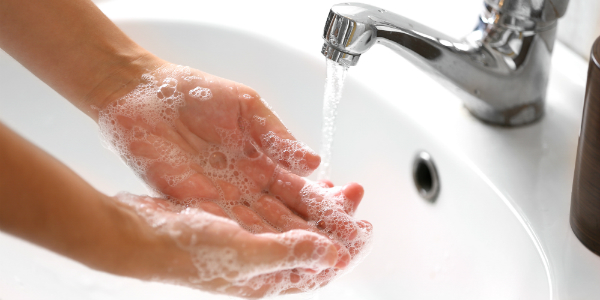Commonly, cleaning products we use for our home or on our selves are bi-products of animal-fat derived soaps or petro-chemicals. Usually a combination of both. What makes Castile soap different is that castile soap is derived from vegetable oil. Making it a non-toxic alternative lather up an ordinary bath or as an amazing all-around cleaner for the home.
Soaps come in 2 varieties; Tallow, acquired from animal fat and makes up most soaps we commonly find at shelves of supermarkets; or Castile soap, which is derived from vegetable oils and is free from chemical additives.
The Technical Stuff; How Castile soap works?

By nature, soap molecules (including Castile soap molecules) have one end that is hydrophobic, which repels water and one end that is hydrophilic which is attracted to water. When water and soap come in contact with each other, free-floating charged atoms are created that attract and capture dirt and other non-soluble molecules such as grease and oil.
This grease grabbing property makes Castile soap a very effective cleaner for oily stove tops and greasy pots and pans.
Straight up or Diluted?

Many variants of Castile soap come in liquid form, making for easier dilution. And depending on the task at hand, you can vary the strength and concentration of Castile soap.
Here are some suggested dilution rates for Castile soap:
Mopping floors:
Mix 1/3 cup of castile soap to 12 litres of warm water in a bucket.
All Purpose Cleaning:
Pour 1/4 cup of castile soap to 1 litre of water mixed in a spray bottle. We strongly recommend adding 1/4 cup of tea tree oil for added cleaning power and disinfecting potency.
Toilet
Mix with warm water at a ratio of 1:4 and transfer in a squirt bottle then add 1/4 teaspoon of tea tree oil. Squirt the solution around the toilet bowl then sprinkle some bi-carb soda on the brush and agitate the bowl. Let it dwell for 10 minutes then flush the toilet.
Windows
We usually recommend a vinegar based solution to clean windows. For extremely grimy windows where vinegar can't quite cut the mustard, we suggest giving this 2-step process a shot:
- Mix 1 tablespoon of Castile soap in a litre of warm water in a spray bottle. Spray the entire window with the solution and let it sit for a few minutes. Then wipe the grime off using a micro-fibre cloth.
- Spray the window again, this time with a solution of equal parts white vinegar and water and wipe. You'll be amazed at the sparkling results.
Do I need to Neutralise Castile Soap?

Using a strong concentration of castile soap, especially on porous surfaces tend to leave a slight residue if not neutralised. The ideal way to neutralise Castile soaps is through the use of a mild acid, such as white vinegar. To prevent residue build up from using castile soap, we suggest the following:
Mopping: After every 4th clean using the Castile soap solution, mop the floor using a mild solution of white vinegar and water.
Clothes Washing: When using Castile soap to wash clothes, add a small amount of white vinegar in the fabric softener dispenser of your washing machine. That way, the vinegar can neutralise your clothes during the rinse cycle.
How much is Castile Soap Cost and Where do I get it?

The most convenient way to get your hands on Castile soap is by ordering online. Dr Bronner's is the most popular brand and offers a wide variety of Castile soaps at roughly $30 per litre. If you're keen on using Castile soap for personal use, you can never go wrong with Dr Bronner's Castile soap products.
For plain Castile soap, you can Google Aussie Soap Supplies. They offer unscented Castile soap for around $15 per litre, then you can add your own scent using aromatic oils of your choosing.
SUBSCRIBE TO OUR NEWSLETTER
Sign up for email promotions, tips and special offers.



